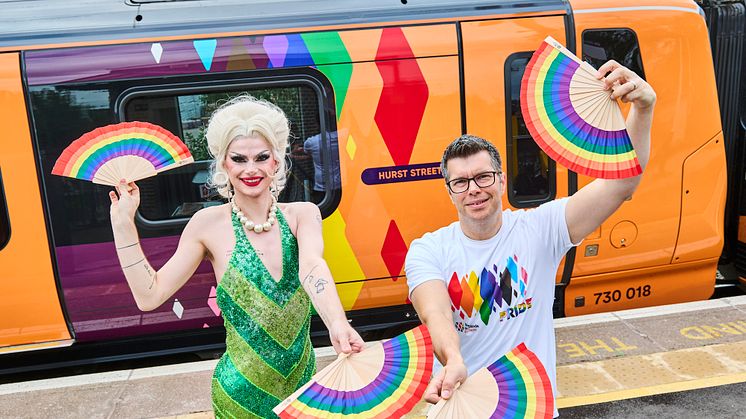New Train Named Hurst Street: A West Midlands Railway Train

The new train named Hurst Street is a West Midlands Railway (WMR) train honoring Birmingham’s famous Gay Village [Birmingham Pride train]. West Midlands Railway (WMR) recently unveiled a novel addition to its fleet – a train christened the “Hurst Street.” This christening transcends mere nomenclature; it stands as a formal acknowledgement of Birmingham’s renowned Gay Village. The Hurst Street serves not only as a mode of transportation but also as a vibrant testament to the city’s commitment to inclusivity.
Here’s a quick rundown of the details we know:
- Name: Hurst Street (also known as 730018) [Birmingham Pride train]
- Type: Class 730 train [Birmingham Pride train]
- Owner: West Midlands Railway (WMR) [Birmingham Pride train]
- Route: Cross City Line through Birmingham [Birmingham Pride train]
- Reason for Name: Honors Birmingham’s Gay Village [Birmingham Pride train]
- Special Features: Rainbow diamond motif and the word “PRIDE” [Birmingham Pride train]
PRIDE Train
The inaugural train of the Class 730 fleet, the Hurst Street eschews the traditional, nondescript naming conventions. Instead, it is adorned with a striking motif – a tessellated diamond pattern resplendent in the colors of the rainbow. The accompanying inscription, “PRIDE,” leaves no room for ambiguity regarding the message it conveys. This ostentatious display serves as a public declaration of Birmingham’s embrace of diversity.
The christening of the Hurst Street extends beyond aesthetics. It signifies a deeper societal engagement by WMR. The selection of this moniker also underscores the pivotal role the Gay Village plays in Birmingham’s cultural tapestry. The Hurst Street thus becomes a symbol of recognition and respect.
This initiative serves as a harbinger of future developments. The Hurst Street paves the way for the christening of subsequent trains within the Class 730 fleet. These future locomotives will bear names that pay homage to the diverse and also rich tapestry of landmarks that define the West Midlands region. Passengers can thus anticipate encountering a mobile homage to the region’s heritage during their travels.
The arrival of the Hurst Street marks a significant milestone. It transcends its function as a mere train, transforming into a potent symbol of inclusivity and also a celebration of Birmingham’s vibrant cultural landscape. As passengers embark on their journeys, they are presented with a visual testament to the city’s unwavering commitment to diversity. The Hurst Street beckons – a locomotive not just for transportation, but for a celebration of progress and prid


